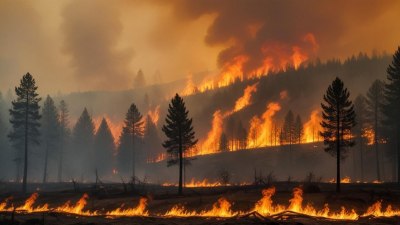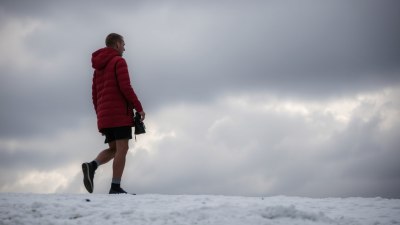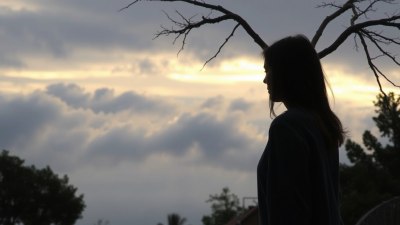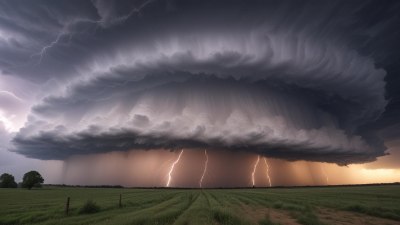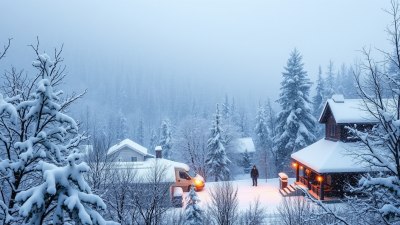Why Walking Across a Large Plaza Always Feels Like a Desert Expedition
Explore the psychological and physical elements that make large plazas feel like arid desert expeditions.
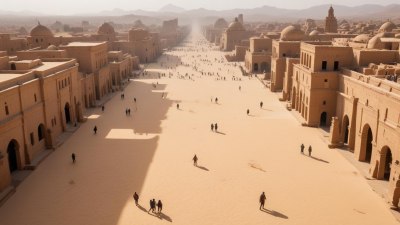
This image was created with the assistance of Freepik
Walking across a large plaza often invokes a sensation reminiscent of an expedition through a desert. This feeling may stem from a variety of factors, both psychological and environmental, that enrich our experience of vast public spaces. Understanding these elements can enhance our appreciation of design in urban environments and how they affect our sense of place.
The first noticeable factor when navigating large plazas is the sheer size of the space. When stepping out into an expansive area, individuals are confronted with an overwhelming sense of openness that can trigger feelings of vulnerability similar to those felt when traversing a barren desert landscape. In both situations, the vastness can lead to a mixture of awe and trepidation. Urban designers often strive to create cohesive and inviting spaces; however, when plazas are particularly vast, they can feel desolate and unwelcoming.
Psychological Effects of Space
Research into environmental psychology reveals that humans are naturally inclined to feel more secure in enclosed spaces. Plazas often lack the natural barriers that create a sense of safety. As people traverse these open areas, the expansive views can evoke feelings of exposure, akin to the sensation of wandering through a desert wilderness, where the scope seems limitless and the eye can sometimes deceive the mind regarding distance and safety.
Accompanying this sense of vulnerability is a psychological phenomenon known as “prospect and refuge.” In nature, the ability to see distant challenges or rewards often comes with a corresponding need for safe hiding places. Within a large plaza, like a modern-day oasis, the absence of significant architectural features can diminish feelings of refuge, prompting individuals to feel more like explorers on a vast stretch of barren land.
Environmental Elements
The environmental characteristics of a plaza can further amplify this desert-like feeling. The materials used in the design of the plaza—such as concrete, stone, and large-scale landscaping—often contribute to the feeling of aridity. A hot day can make the asphalt or stone feel inhospitable, much like the scorching terrain of a desert, leaving pedestrians yearning for shaded areas or water sources. The heat can be exacerbated by reflecting sunlight off smooth surfaces, creating a ‘heat island’ effect that mirrors the intense conditions found in desert ecosystems.
Moreover, a lack of greenery and water features can transform the experience of a plaza into a struggle against nature, akin to the challenges faced in an actual desert. In many large public spaces, design may prioritize open areas without integrating natural elements. This imbalance can make the environment feel bare and uninviting, prompting feelings of weariness as one walks across the large expanse.
The Sound of Solitude
Sound can play a pivotal role in shaping perceptions of space. In large plazas, the acoustics often lend themselves to a sense of isolation. The echoes of footsteps sound different when surrounded by vast open space, emphasizing solitude rather than camaraderie. Similarly, deserts often have their own eerie soundscapes, where the absence of wind can create an unsettling silence. This quiet can sadly lead to feelings of loneliness among those traversing the plaza, amplifying the desert expedition sensation.
In addition, the presence or absence of crowds significantly alters the dynamic. A bustling plaza may alleviate some of the openness’ harshness, providing a sense of community. Alternatively, an empty plaza mirrors the solitude of a desert, where the environment feels unforgiving and devoid of supportive companions. The contrast between the number of individuals present and the expanse of the area can either comfort or exacerbate feelings of isolation.
Historical Comparisons
Historically, plazas have served as a confluence of various activities—markets, celebrations, and gatherings. However, contemporary uses may highlight their expansiveness at the expense of interaction. This shift in utility has led many to perceive these spaces as more arid, akin to the sweeping sands of a desert rather than vibrant communal hubs. The perception of abandonment in large plazas can bring to mind dying oases, making visitors feel like pioneers seeking life in barren land.
Moreover, the cultural context of a plaza often dictates its vitality. In places where large public squares serve as political or social meeting points, the connection to the environment feels far more alive. Without these cultural rituals, the plaza becomes a mere geographic feature, a void devoid of social prominence, which can make it feel like an empty desert.
Architectural Influence
The architecture of the surrounding buildings plays a crucial role in enhancing or mitigating the desert-like qualities of a plaza. Large, monolithic structures can create a stark contrast against a bright sun, emphasizing the flatness of the space and reinforcing the feelings of emptiness. If nearby buildings are inviting with greenery or interesting design elements, they can serve to minimize these feelings of isolation because they create points of interest in the landscape.
Moreover, the use of furniture and landscaping within a plaza can significantly impact the experience. Informal gathering spaces with seating can break up the expanse and offer areas for social interaction. When well-placed, these features help maintain the energy of a plaza, like an oasis providing relief from harsh desert conditions. Although the natural environment may be remarkable in its simplicity, it requires thoughtful design to be a viable space for social interaction.
Seasonal Changes
The seasons can dramatically affect one’s experience of a large plaza, paralleling the changing conditions of a desert. In the summer, excessive heat and a glaring sun can drive individuals to seek refuge. The feeling is not unlike that experienced when traversing a harsh desert land during midday when the sun's rays bear down mercilessly. Conversely, in winter, a plaza can feel inhospitable due to cold winds and sparse activity, similarly paralleling the barren feel of frozen desert landscapes.
This cyclicality impacts emotional responses; with warmer weather, the emotional ambiance shifts, invigorating interactions and camaraderie as people begin to occupy the space. During winter or rainy seasons, similar to desert droughts, the energy depletes as fewer individuals dare to traverse the expansive terrain.
The Role of Art and Features
Art installations or fountains can provide crucial focal points in plazas, much like bodies of water or unique rock formations in desert landscapes. These features break up the monotony of an uninspired landscape and offer refreshing changes in visual interest, helping revitalize the exploratory demeanor. Art can invite engagement and inspire curiosity while serving as crucial landmarks for orientation, much like oases in a vast desert.
When incorporated thoughtfully, features in a plaza can encourage a dialogue between the environment and visitors. Statues, murals, and interactive installations serve to create a sense of community and belonging, bringing life to an otherwise barren scenario.
Embracing the Experience
Ultimately, while walking across a large plaza may evoke images of a solitary expedition across a desert, it is an experience rich with potential for exploration and discovery. By recognizing and addressing the psychological, environmental, historical, and architectural elements at play, urban planners can reshape how we interact with these spaces. Enhancing the features that foster connection and engagement can transform plazas into living oases instead of expanses of barren vastness. The next time you find yourself walking across a large plaza, embrace both the vulnerability and beauty of the moment. Like a desert journey, each expedition can provide new insights and encounters if we open ourselves to the experience.





